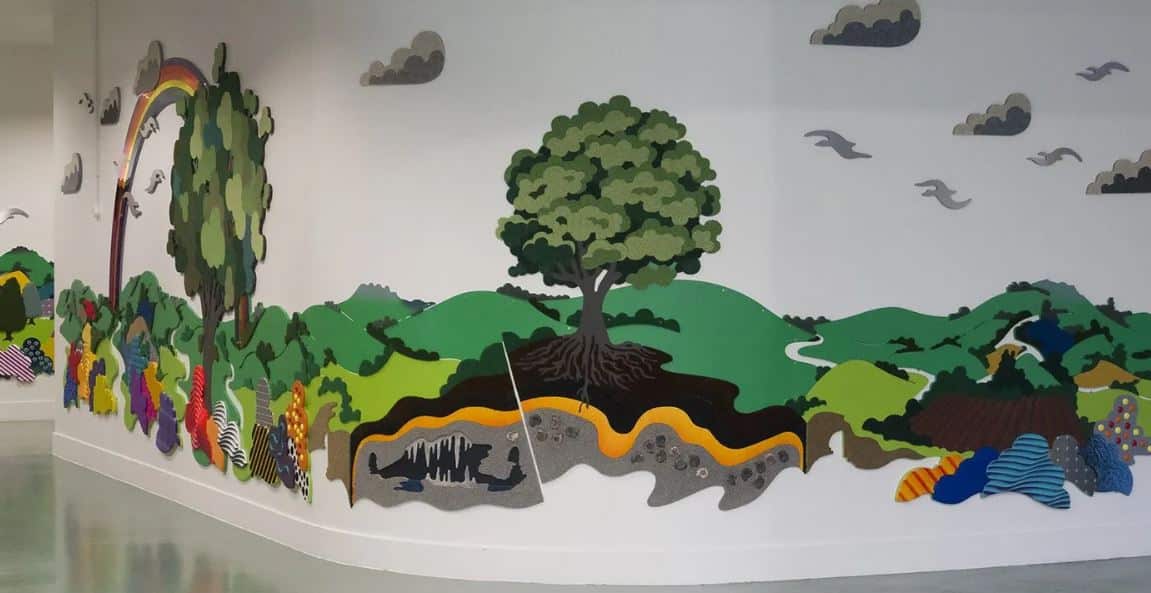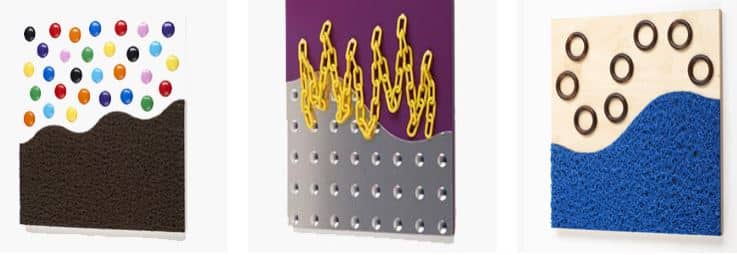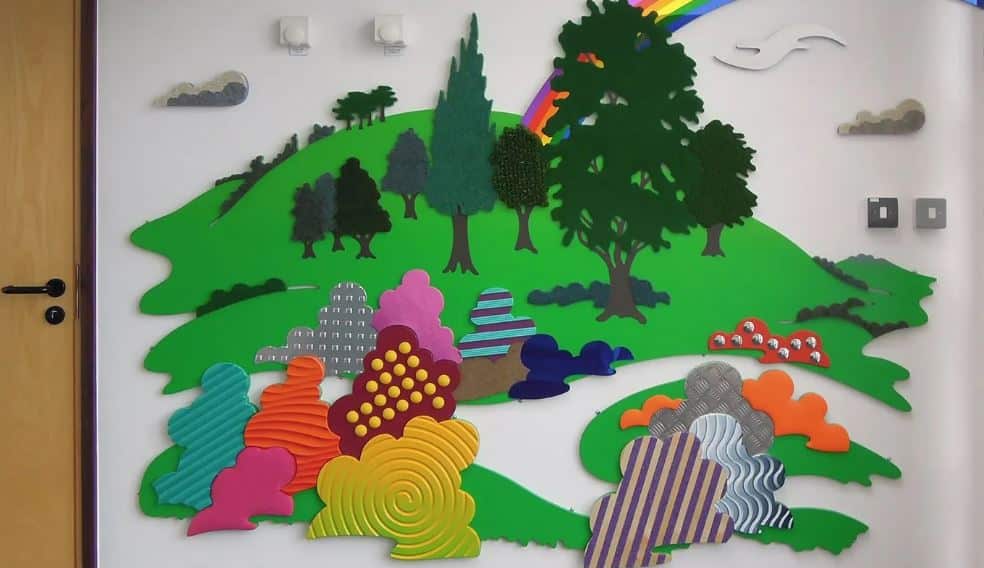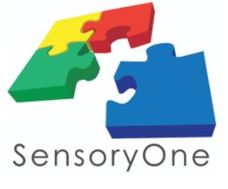
In the realm of interior design, tactile wall panels and murals have emerged as transformative elements that not only enhance aesthetic appeal but also contribute significantly to sensory experiences. The multifaceted roles of tactile wall panels and murals provides benefits in various settings, with a special focus on their positive impact on individuals with neurodiversity, autism spectrum disorder (ASD), and other sensory challenges.
As interior design elements, they’re simply brilliant and are commanding the attention of top commercial and institutional designers.
At SensoryOne, we assist clients with all aspects of design. We’ll work with your own interior designers or support non-professional department leads in designing sensory spaces that will inspire clients and visitors alike. We also specialize in custom designed murals.
I. Understanding Tactile Wall Panels: A Sensory Symphony
Tactile wall panels are three-dimensional surfaces that engage the sense of touch, offering a dynamic and interactive element to the surrounding environment. These panels are crafted from a variety of materials, including textured fabrics, soft foam, and other sensory-friendly materials. Simple tactile wall tiles offer basic tile shapes, with similar textured features.

II. Murals Beyond the Canvas: An Artistic Evolution
Murals, traditionally confined to walls, have undergone a renaissance with the incorporation of tactile elements. Artists and designers are now merging the visual and tactile realms to create immersive, sensory-rich experiences.

III. Where Tactile Wall Panels Thrive: Medical Waiting Areas
A Calming Presence Amidst Anxiety In medical waiting areas, patients often experience heightened stress and anxiety. Tactile wall panels provide a soothing distraction, creating a more comfortable environment for individuals awaiting appointments or medical procedures.
IV. Hallways: Transforming Transitory Spaces
Navigating Sensory Landscapes Hallways in institutional and educational centers serve as pathways between different spaces. Tactile wall panels strategically placed in these areas stimulate sensory engagement, making the journey between classrooms or offices a sensory-rich experience.
V. Inclusive Learning Environments: Tactile Panels in Educational Centers
Enhancing Learning for All In educational settings, tactile wall panels foster inclusive learning environments. These panels serve as interactive educational tools, engaging students with various learning styles and abilities.
VI. Artistic Brilliance: Tactile Murals as Focal Points
Beyond Aesthetics – The Functional Artistry Tactile murals serve as brilliant art pieces that transcend traditional boundaries. Beyond their visual appeal, these murals offer functional benefits by inviting touch and interaction.
VII. Sensory Benefits for Children with Neurodiversity and ASD
Nurturing Sensory Development Children, especially those with neurodiversity, autism, or sensory challenges, benefit immensely from tactile wall panels and murals. These installations provide a platform for sensory exploration, aiding in the development of fine and gross motor skills.
VIII. Stimulating and Calming Effects: Tailoring Environments for Individuals
Creating Tailored Sensory Experiences The sensory stimulation provided by tactile wall panels can be adjusted to suit individual preferences. For some, the panels offer a calming effect, while for others, they provide a stimulating and invigorating experience.
Shaping Spaces for Sensory Well-being
The integration of tactile wall panels and murals in various settings transforms spaces into sensory-rich environments. From medical waiting areas to educational centers, these installations cater to diverse needs while catering to the specific requirements of individuals with neurodiversity, autism, and sensory challenges.
The fusion of artistic brilliance and sensory benefits makes tactile wall panels and murals not just design elements but catalysts for inclusive, engaging, and enriching spaces.



